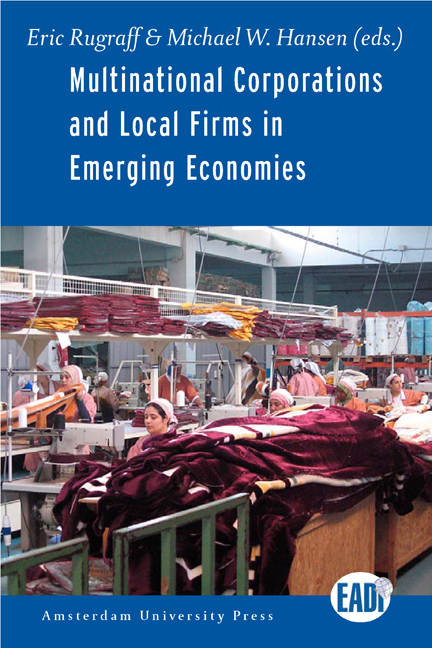4 - African small and Medium Enterprises and the Challenges in Global Value Chains: The case of Nigerian Garment Enterprises
Published online by Cambridge University Press: 19 January 2021
Summary
Introduction
The increased intensity of economic globalization supported by the fallen barriers to entry in production has pressured countries to improve their capabilities in industrial activities. The globalization process has accelerated the growth of world imports and exports as well as increased Foreign Direct Investment (FDI) across borders since the 1980s. The concept of Global Value Chains (GVCs) refers to the interrelated production activities performed by firms at different geographic locations. The interrelated activities offer opportunities for local producers to learn from the global leaders of the chains. The internal governance of the value chain significantly affects the scope of local firms’ upgrading (Giuliani et al., 2005). Multinational Corporations (MNCs) play an important role in the GVCs. The MNCs are involved in the global production and outsourcing networks that facilitate linkages. They engage in subcontracting or joint venture activities with local small and medium enterprises (SMEs) and have the ability to source products and services from a variety of vendors at various stages of their operations (UNCTAD, 2007, p. 1). In some cases, the MNCs take active steps in upgrading the capabilities of their suppliers for efficient delivery of services (UNIDO, 2004, p. 5).
With exemption of South Africa, SMEs in sub-Saharan Africa are marginalized in GVCs because they lack the potential individually to improve performance. The aim of this chapter is not only to show why sub-Saharan SMEs are marginalized from the GVCs but also to analyze the challenges the SMEs in the region face in order to be integrated in the GVCs. The chapter also provides the analytical framework on how MNCs can impact transformation in African SMEs using the global value chains approach. The chapter is divided into six sections. The next section provides the methodology of the study while section three focuses on the literature review and the theoretical framework of the study. Section four provides the relationship between GVCs and upgrading while section five focuses on the capabilities of Aba garment producers, how MNCs can impact growth in garment industries in Nigeria as well as the challenges the garment producers face for possible integration in the GVCs. Section six concludes the chapter and provides GVCs-specific recommendations.
- Type
- Chapter
- Information
- Multinational Corporations and Local Firms in Emerging Economies , pp. 101 - 122Publisher: Amsterdam University PressPrint publication year: 2011
- 1
- Cited by

